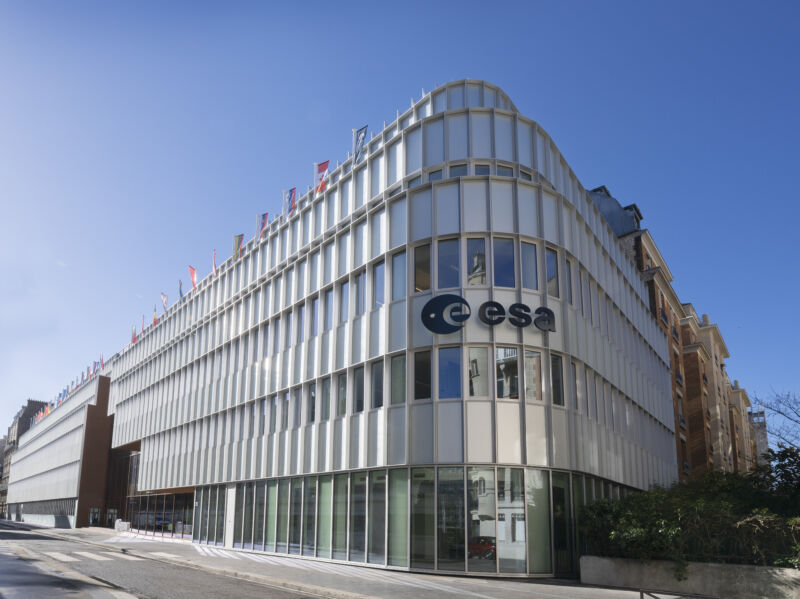
According to a new internal survey conducted by the European Space Agency’s (ESA) staff association, about 30 percent of ESA’s employees have either experienced or witnessed harassment in the workplace. The survey, published internally on December 6 and seen by Ars Technica, confirms the findings of our recent investigation into allegations of harassment and bullying at the agency.
The internal survey ran from July 19 to September 15 of this year and collected the responses of 2,751 workers, representing nearly half of all ESA employees across its six main centers in France, Germany, the Netherlands, the UK, Spain, and Italy. The ESA staff association was set up by ESA to represent staff members, but the survey included both staff members and on-site contractors who are loaned to the agency through a network of cooperating manpower companies in Europe.
Among the respondents, nearly a third said they had witnessed harassment during their time at the agency, while 28 percent said they had directly experienced it. The report states that a “complementary analysis of 1,200 comments” provided by the respondents suggests that about 20 percent of the ESA workers experienced harassment within the past 24 months. The types of harassment disclosed in the survey included bullying and mobbing (60 percent of cases), moral harassment (30 percent of cases) and sexual harassment (10 percent cases).
(Mobbing is a form of psychological abuse that involves multiple people working together to weaken a person. Moral harassment involves any behavior designed to bring about emotional distress by humiliation, intimidation, and unfair criticism.)
A history of problems
The reported levels of harassment are nearly identical to those found by independent studies conducted in 2008 and 2009 by occupational psychology consultancy Pearn Kandola.
Authors of the Pearn Kandola studies at that time described the levels of reported harassment as “concerning” and recommended the agency take action. The authors of the new report, however, admit that whatever measures have been taken in the ensuing years have not delivered results.
That may be because few of these incidents appear to be reported. The report says that the results of the new survey are in stark contrast to the rarity of harassment reports collected by the agency’s HR department. Surveyed workers who said they had experienced harassment gave several reasons for not speaking up, with 40 percent indicating they were either intimidated by fear of retaliation or worried that reporting problems would damage their career. Other reasons mentioned included distrust in the administrative procedure and a belief that nothing would change.
“The majority of reasons why colleagues do not step forward when experiencing or witnessing harassment stem from a particular behavioral pattern that might be referred to as culture, which is prevalent in the offices and corridors of ESA,” the report states. “Such a notion is not new and is often shrugged off with some complacency that the culture cannot be changed.”
Ineffective policies
ESA’s spokesperson previously denied problems with corporate bullying and harassment to Ars Technica, referring to what the agency described as state-of-the-art anti-harassment policies. The new report suggests most ESA workers don’t take advantage of these policies: “62 percent of staff and 81 percent of contractors were either not aware of the ESA Policy on Facilitation & Mediation and the recently revised Policy on Reporting Unwanted Conduct and Investigating Harassment at ESA or did not consider them useful.”
Of the ESA employees Ars spoke with during the earlier investigation, most who experienced harassment failed to seek help either from the agency’s HR department or, in the case of contractors, their manpower companies. And in at least one case, a contractor was fired for “bad behavior” after lodging an official complaint about a manager whose behavior four other colleagues described as abusive.
Since the publication of that investigation, about 30 additional individuals have come forward, detailing various grievances experienced within the ESA environment. The newly collected incidents include cases of mobbing, being yelled at in public, marginalizing and side-lining of workers, and assigning them menial tasks below their qualification and experience level.
As an intergovernmental organization, ESA has a special legal status that places it outside any national jurisdiction. Thanks to this immunity, guaranteed in the agency’s founding document the Convention, signed in 1975, local labor laws may not apply, and all the agency’s internal documents, including staff email and correspondence, are out of reach to external investigators.
Because of the issues it has identified, the staff association’s report admits that the situation has “a serious impact on the performance of the Agency and stands in the way of ESA being simply a safe, attractive, and joyful place to work that we can be proud of.” It argues, however, that the reported levels of harassment are comparable to those seen in a 2022 investigate by the United Nations International Labor Organization on violence and harassment at work. The UN also saw that roughly 20 percent of workers had experienced harassment—but that was over their entire lifetime in the workforce. In contrast, the new survey suggests that 20 percent of the workers at ESA have an equivalent experience within just the past two years.
Tereza Pultarova is a London-based science and technology reporter. She has been covering the space sector for over 10 years and has previously served as a senior reporter at Space.com.

